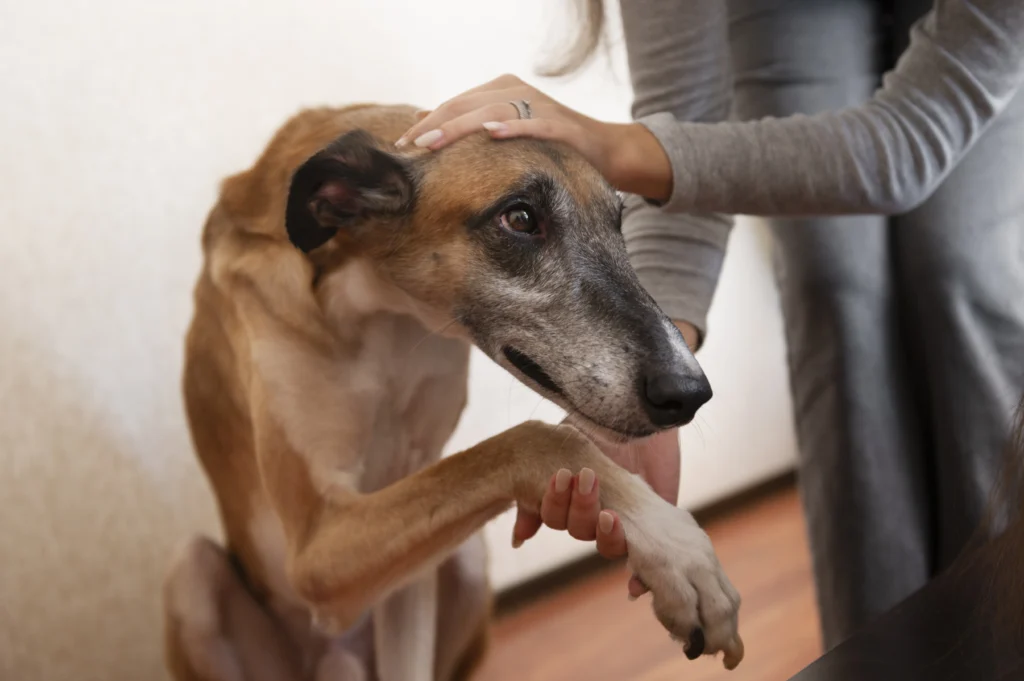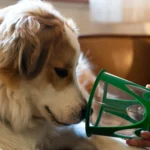
Contents
Your dog’s playful leaps, long walks, and enthusiastic runs all depend on the strength and health of their joints, particularly their elbows. However, one of the most common orthopedic issues affecting dogs, especially medium and large breeds, is elbow dysplasia. This developmental condition causes pain, stiffness, and reduced mobility in the front legs.
Understanding the signs of elbow dysplasia in dogs early on is key to managing the condition effectively and preventing lifelong discomfort. Left untreated, it can lead to arthritis, pain, and even permanent joint damage. In this guide, we’ll explore what elbow dysplasia is, the symptoms to watch for, breeds most at risk, and how veterinary care can help your dog live comfortably.
What Is Dog Elbow Dysplasia?
Elbow dysplasia is a developmental disorder that occurs when the bones forming a dog’s elbow joint (the humerus, radius, and ulna) do not fit together perfectly. This mismatch causes instability, friction, and uneven pressure on the joint, leading to inflammation and pain. Over time, this can progress into arthritis or osteoarthritis, especially in older dogs.
The condition can vary in severity. Mild elbow dysplasia may cause occasional stiffness, while more advanced cases can lead to severe lameness and joint deformities. The problem typically affects both elbows, although one side may appear worse.
Causes of Elbow Dysplasia
Several factors can contribute to the development of elbow dysplasia in dogs, including:
- Genetics: Elbow dysplasia is hereditary, with certain breeds being more predisposed. Dogs with a family history are at higher risk.
- Rapid growth: Puppies that grow too quickly may experience joint misalignment, leading to elbow dysplasia. Proper nutrition helps control growth rates.
- Excess weight: Overweight dogs place added stress on developing joints, increasing the likelihood of elbow dysplasia. Maintaining a healthy weight is crucial.
- Injury or trauma: Early-life injuries or trauma can worsen joint instability, contributing to the development of elbow dysplasia. Proper care helps prevent this.
Signs of Elbow Dysplasia in Dogs
Recognizing the early signs of elbow dysplasia can make a significant difference in your dog’s long-term comfort. Symptoms often appear gradually and may worsen after exercise or play. Early detection is key to managing the condition effectively and preventing further joint damage.
1. Limping or Stiffness (Worse After Exercise)
Dogs with elbow dysplasia often begin limping on one or both front legs, particularly after physical activity like running or jumping. The limp may be subtle initially, but it becomes more noticeable with regular exercise. This worsening of symptoms post-activity signals discomfort and joint instability.
2. Less Enthusiasm for Walks or Play
Elbow dysplasia causes pain and stiffness, which can make your dog less interested in walks, running, or playing. Affected dogs may prefer resting or lying down rather than engaging in their usual physical activities. This change in behavior can be a sign of underlying joint discomfort.
3. Front Paws Pointing Outwards
A classic sign of elbow discomfort is when your dog’s front paws point outward while standing. This posture reduces strain on painful joints, offering the dog some relief. However, the outward positioning suggests joint instability and should be evaluated by a vet for proper diagnosis and treatment.
4. Elbows Held at a Strange Angle
Dogs with elbow dysplasia may hold their elbows at an unusual angle, either bowing outward or inward. This abnormal positioning is a natural attempt to relieve pressure on the joints. If you notice this change in posture, it’s an indication of joint discomfort that requires veterinary attention.
5. Swollen or Puffy Elbows (in Severe Cases)
In severe cases of elbow dysplasia, the affected joint may become swollen or puffy due to inflammation or fluid buildup. This visible swelling is a clear sign that the condition has progressed and that your dog needs immediate veterinary evaluation for proper treatment and management.
6. Pain and Discomfort
Dogs with elbow dysplasia may vocalize pain, yelping when their elbows are touched or when performing activities like climbing stairs. They may avoid jumping or getting up from rest. If your dog frequently licks or whines in discomfort, it’s important to seek veterinary care for pain relief and diagnosis.
Explore this complete guide on How to Handle Pet Trauma Before Reaching Emergency Care.
How Elbow Dysplasia Progresses
If left untreated, elbow dysplasia can lead to chronic arthritis and osteoarthritis, both of which cause ongoing inflammation and pain. As the disease progresses:
- Cartilage begins to wear down, increasing friction in the joint.
- Bone spurs (osteophytes) may form, limiting joint movement.
- Muscle atrophy can occur as dogs use the limb less frequently.
Early intervention and proper treatment can slow this process and help manage your dog’s mobility problems for years.
Diagnosing Elbow Dysplasia
If your dog shows any signs of elbow dysplasia, it’s important to schedule an appointment with your veterinarian. During the exam, the vet will check for pain, swelling, and limited range of motion in the elbows. To confirm the diagnosis, your vet may recommend diagnostic imaging such as X-rays to visualize bone changes or joint abnormalities. Additionally, CT scans may be used to detect early or subtle bone lesions that may not be visible on X-rays, providing a more detailed view of the condition.
Treatment Options for Elbow Dysplasia
1. Pain Relief and Medication
Pain management is the first step in treatment. Veterinarians may prescribe anti-inflammatory medications or other pain relief options to reduce discomfort and swelling. Consistent treatment can improve mobility and quality of life.
2. Weight Control
Maintaining a healthy weight is essential. Extra weight puts added pressure on your dog’s joints, worsening the pain and progression of arthritis. Ask your vet about a balanced diet to help your dog stay slim.
3. Controlled Exercise
Exercise is important, but it must be controlled and low-impact. Short, lead walks and gentle play are best. Avoid high-impact activities like jumping, chasing balls, or climbing stairs, as these can aggravate joint damage.
4. Rest and Reduced Activity
If your dog is experiencing pain and discomfort, providing ample rest is vital. A comfortable, padded bed and limited movement will help reduce inflammation and prevent further injury.
5. Surgery (for Severe Cases)
In severe or advanced cases of elbow dysplasia, surgery may be required. This is typically performed by a specialist veterinary surgeon at a referral hospital. Surgical procedures may involve:
- Removing damaged cartilage or bone fragments
- Aligning the bones for better joint function
- Replacing parts of the elbow joint in extreme cases
Surgery can relieve pain and improve mobility, although recovery may take several weeks with post-operative care and physical therapy.
6. Physiotherapy
Physiotherapy helps strengthen muscles around the joint, improve circulation, and increase flexibility. Gentle stretching, range-of-motion exercises, and massage therapy can reduce stiffness and enhance joint support.
Preventing Elbow Dysplasia
While you can’t always prevent elbow dysplasia, especially in genetically predisposed breeds, you can take steps to reduce the risk and severity:
- Choose responsible breeders: Ask breeders for elbow scores and health certificates before purchasing a puppy. Responsible breeding practices can help prevent elbow dysplasia..
- Manage weight: Maintaining a healthy weight is crucial for preventing elbow dysplasia. Excess weight places stress on developing joints, increasing the risk.
- Avoid over-exercise in puppies: Limit long runs and jumping during growth periods. Allow joints to develop naturally to reduce the risk of elbow dysplasia.
- Schedule regular checkups: Routine veterinary checkups help detect early signs of elbow dysplasia. Early intervention improves treatment outcomes and joint health over time.
- Provide joint support: Support your dog’s joints at home by adding ramps, soft bedding, and non-slip mats. These measures help protect their elbows.
Living with a Dog Diagnosed with Elbow Dysplasia
Dogs diagnosed with elbow dysplasia can still live happy, active lives with proper management. Focus on pain control, joint-friendly exercise, and a healthy diet. Regular veterinary visits will help track progression and adjust treatment as needed.
It’s also important to keep your dog mentally stimulated with puzzle toys, gentle play, and companionship, as limited physical activity can lead to boredom or frustration.
Conclusion
Recognizing the signs of elbow dysplasia in dogs early can make all the difference in preserving your pet’s mobility and comfort. If you notice symptoms like limping, stiffness, or swollen elbows, seek veterinary care immediately. Early diagnosis and a tailored treatment plan can help prevent long-term joint damage and arthritis.
At North MS Pet Emergency, we specialize in diagnosing and managing joint and mobility issues in dogs. Whether your pet needs pain relief, advanced imaging, or emergency care, our experienced veterinary team is here to help your dog stay active and pain-free.
Contact us now for emergency care, or visit us for after-hours veterinary support.
FAQs
1. What are the first signs of elbow dysplasia in dogs?
The first signs include mild limping, stiffness after exercise, or a reduced interest in walking or playing. Dogs may also hold their front paws outward or shift weight unevenly to relieve pain and discomfort in the elbow joints.
2. How do dogs lay with elbow dysplasia?
Dogs with elbow dysplasia often lie with their front legs extended outward or angled oddly to reduce pressure on painful joints. They may avoid resting directly on their elbows and change positions frequently to ease discomfort.
3. What age does elbow dysplasia start?
Elbow dysplasia usually develops in young dogs between 5 to 18 months old, especially in large breeds. However, symptoms may not appear until adulthood when arthritis or joint degeneration begins to affect mobility and comfort more noticeably.
4. How do you treat elbow dysplasia in dogs?
Treatment includes pain relief, weight management, and controlled exercise to protect the joints. In severe cases, surgery may be required to remove bone fragments or realign the joint, followed by physiotherapy or hydrotherapy for improved recovery and flexibility.
5. What causes elbow dysplasia in dogs?
The primary causes are genetic predisposition, rapid growth, excess weight, and joint trauma during puppyhood. These factors cause bone misalignment and cartilage wear, leading to chronic pain, swelling, and arthritis in one or both elbows.




